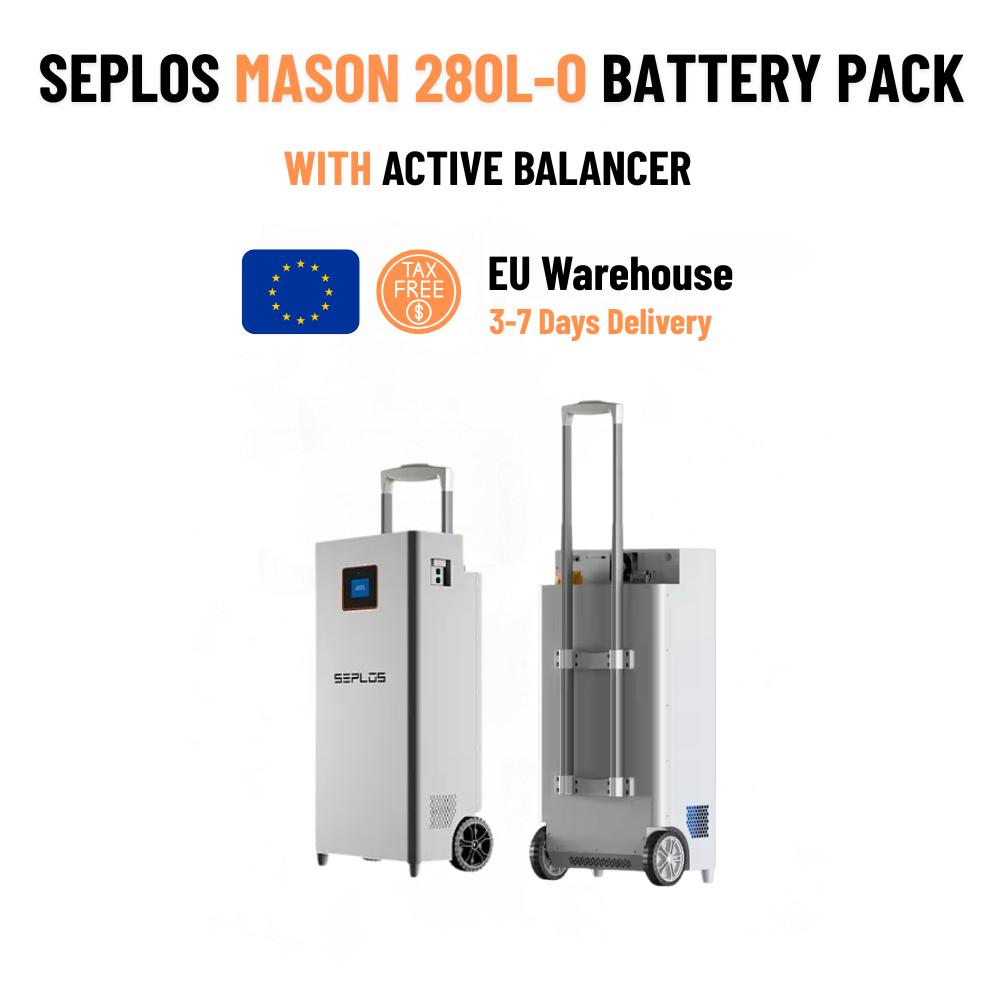
Understanding the Components of a Battery DIY Kit
Understanding the Components of a Battery DIY Kit
Building your own battery pack is a cost-effective and customizable solution for energy storage. However, understanding the key components of a battery DIY kit is essential for assembling a safe and efficient system. In this guide, we explore the essential elements of DIY battery kits and how products like Seplos V4 DIY kits, Mason 280l battery DIY box, and offerings from Seplos Europe warehouse provide reliable solutions for DIY enthusiasts.
1. Battery Cells – The Power Source
Battery cells are the heart of any DIY battery pack. These cells store and discharge energy, and their quality determines the longevity and efficiency of your battery system. High-performance lithium cells, commonly used in Seplos V4 DIY kits, ensure durability, safety, and stable power output.

2. Battery Management System (BMS) – Safety and Efficiency
A BMS protects the battery pack by monitoring voltage, temperature, and state of charge. It prevents overcharging, deep discharging, and overheating, ensuring a longer lifespan for your battery. The Mason 280l battery DIY box is designed to integrate seamlessly with high-quality BMS solutions for enhanced safety and reliability.
3. Battery Enclosures – Protection and Structure
A durable enclosure protects the battery pack from external damage, dust, and moisture. Well-designed enclosures, like those available from Seplos Europe warehouse, provide a secure and structured setup for battery modules, making DIY assembly safer and more efficient.
4. Busbars – Connecting Battery Cells
Busbars are essential components that connect battery cells, ensuring even power distribution and reducing energy loss. High-quality copper or nickel-plated busbars improve conductivity and heat dissipation, enhancing the overall efficiency of the battery pack. When assembling Seplos V4 DIY kits, choosing the right busbars is crucial for system stability.
5. Copper-Nickel Composite – Enhancing Conductivity
Using a copper-nickel composite for electrical connections offers better corrosion resistance and conductivity. This ensures long-lasting performance, especially in high-power applications. Mason 280l battery DIY box supports high-efficiency copper-nickel connections for improved durability and performance.
6. Cables and Wiring – Ensuring Safe Power Transmission
Proper cabling is necessary to handle the current flow between battery modules, BMS, and output terminals. High-quality insulated cables reduce resistance, minimize heat generation, and improve safety. Products from Seplos Europe warehouse include robust wiring solutions for optimized power transfer and secure connections.

Conclusion
A well-assembled battery DIY kit consists of high-quality battery cells, a reliable BMS, sturdy enclosures, and additional components like busbars, copper-nickel composites, and durable wiring. Whether you're using Seplos V4 DIY kits, the Mason 280l battery DIY box, or sourcing components from Seplos Europe warehouse, choosing the right parts is key to building a durable and efficient energy storage solution.

